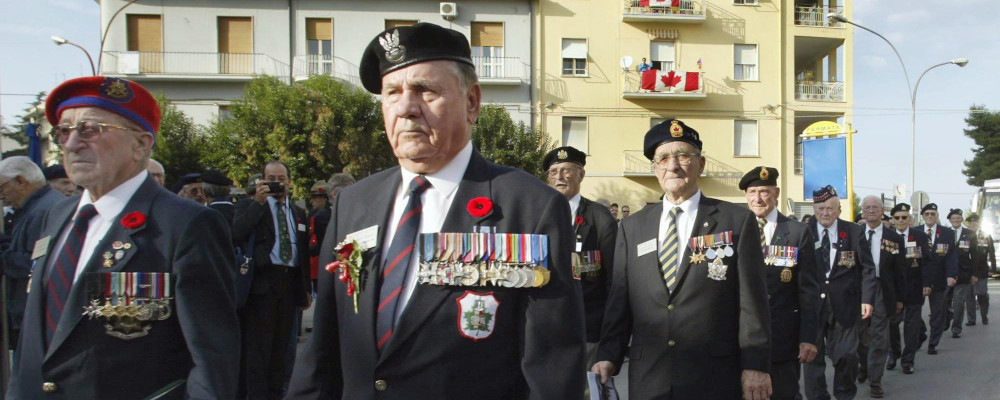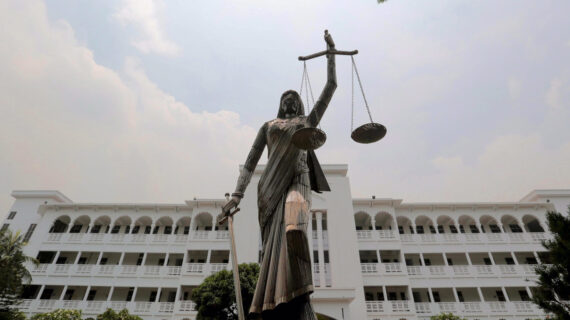The Canadian Army casualty lists were very long in the year-and-a-half the soldiers fought in Italy: 5,399 dead and 19,486 wounded, or more than one-quarter of the troops deployed there. The Italian campaign was gruelling, and the Germans who had taken control of the country after the Italian surrender in September 1943 fought hard.
The Allied invasion of the Italian mainland began 80 years ago today on September 3, 1943, the 1st Canadian Division landing on the toe of Italy and beginning a rapid advance northward. The Germans retreated, trying to delay General Guy Simonds’ troops by blowing up bridges and using a few men with machine guns to force the attackers to deploy. Their aim was to give them time to build a winter defence line across Italy, and the 1st Division would bump into this line south of a small city called Ortona on the Adriatic in December.
With Simonds taking over the 5th Armoured Division, Major-General Christopher Vokes was now in command of the 1st Division. His units reached the enemy at the Moro River on December 6. For the next three weeks the Canadians faced the heaviest opposition they had yet seen from panzer grenadiers and paratroopers, crack Wehrmacht units. Crossing the Moro was a horrendous affair, the Princess Patricia’s Canadian Light Infantry losing heavily against repeated counterattacks, but holding a small bridgehead while the Seaforth Highlanders had to retreat back across the river. The Hastings and Prince Edward Regiment had no better luck, and Farley Mowat later wrote that “We were appalled by the ferocity of the German reaction…and realized we had never before seen war in its full and dreadful magnitude.”
The vicious combat continued, eventually forcing the Germans back. Then the Canadians ran up against The Gully, a deep cut that had to be crossed on foot. Again the fighting was brutal, and at heavy cost, the Canadians finally prevailed.
Now it was the town of Ortona, a place of no particular military significance, but one the Germans wanted to keep, and Vokes’ formation was ordered to take. This was a street fight, the enemy paratroopers holed up in houses with cleared lanes of fire on the roads. The only way to force them back was to “mousehole” through the walls, building to building, clearing one and moving to the next. Matthew Halton of the CBC hardly overstated matters when he reported that “The action is as fierce as perhaps modern man has fought.” On December 27, the Germans silently withdrew from “little Stalingrad”. It was a victory, but from the 6th to the 27th of December, the toll was 176 officers and 2,163 men killed or wounded, with many more sick or suffering from battle exhaustion. The 1st Division had shot its bolt.
Then followed several months of rest, training and, with the addition of the 5th Armoured, the creation of the II Canadian Corps. Under Lieutenant-General E.L.M. Burns, it would fight its first major battle on the other side of Italy against the Gustav and Hitler Lines. These defences protected the route to Rome, and the Germans had constructed mine fields, concrete bunkers, and half buried tank turrets with sweeping fields of fire. Making matters worse, the one good road through the Liri Valley was to be used by five British and Canadian divisions and their thousands of vehicles, tanks, and artillery tractors.
The assault got underway on May 11, and the 1st Canadian Division joined the action on May 16. The going was difficult, “more intense than anything the battalion had known, worse by far than the firing in front of Ortona,” one officer wrote, and again the casualties were heavy. But with great courage shown by junior leaders, the infantry cracked the line and the 5th Armoured moved into the breach. The highway was jammed, a failure of the British high command’s planning, but the troops, again led by junior officers, performed miracles despite desperate resistance, and Rome was captured by U.S. troops on June 4.
The Canadians had lost some 3,300 killed and wounded and 4,000 sick and injured in three weeks of fighting. The Irish Regiment’s padre had buried 56 men: “It is not too high they say for the work done,” he wrote, “but to me just one is too many.”

For the next two months the Canadians recuperated and trained and then moved their men, equipment and supplies to the eastern shores of Italy. Their target this time was the enemy’s Gothic Line, their defensive works in the Apennines. But during a reconnaissance, Major-General Bert Hoffmeister, now commanding the 5th Armoured, saw that the enemy positions were almost unmanned. The scheduled attack was moved up a few days, and the assault went in. As was usual, the Germans quickly reacted and the fighting was heavy going. The West Nova Scotia Regiment lost 76 men when they were caught in a minefield and raked by machine guns. The British Columbia Regiment lost many of its tanks, its commander, and 21 soldiers under fire from paratroopers and antitank guns. But the Germans had been out-thought, out-fought, and driven from their defences. It was, military historians argue, the greatest Canadian feat of arms of the war, but it killed and wounded another 3,900 Canadian men.
The II Canadian Corps fought on in Italy, pushing north toward the Po River valley. But by the autumn, Ottawa was demanding that the men in Italy be shifted to Northwest Europe so the First Canadian Army could be reunited for the liberation of the Netherlands and the final defeat of Nazi Germany. By March, all the “D-Day Dodgers” (as the blitheringly stupid Lady Astor had called the troops serving in the mud and horror of the Italian battlefields) were gone. Only the Canadian cemeteries with their 5,400 dead remained.




